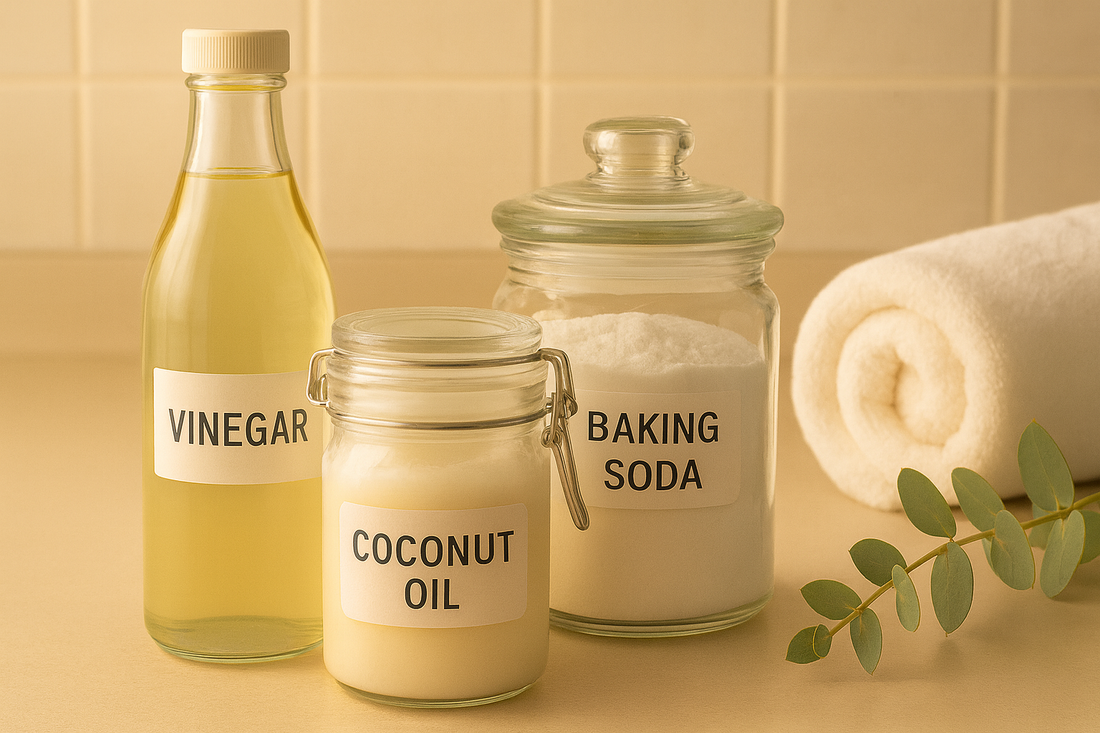The Great Debate: DIY or Cream?
When dealing with itchy, irritated, or dry skin—especially on your feet—you might be tempted to try whatever's in your kitchen first. Vinegar soak? Coconut oil? Baking soda paste?
But when does a home remedy help... and when does it just waste time?
Let’s break down the most common home remedies and compare them to plant-based, professionally formulated creams that are now widely available (and don’t smell like salad dressing).
Common Home Remedies for Skin & Foot Conditions
1. Apple Cider Vinegar Soaks
-
Claim: Kills fungus and bacteria
-
How to Use: Mix 1 part vinegar, 2 parts water. Soak for 15–20 minutes
-
Pros: Cheap, antimicrobial
-
Cons: Strong smell, drying, not moisturizing
-
Effectiveness: Moderate (may reduce symptoms but not eliminate the root cause)
2. Coconut Oil
-
Claim: Antifungal, moisturizing
-
How to Use: Apply directly to affected area
-
Pros: Smells great, deeply hydrating
-
Cons: Not targeted for fungus, can feel greasy
-
Effectiveness: Mild to moderate relief for dry skin or minor irritation
3. Tea Tree Oil
-
Claim: Antifungal, antibacterial
-
How to Use: Dilute with carrier oil and apply
-
Pros: Effective against fungus
-
Cons: Can be harsh undiluted, risk of skin irritation
-
Effectiveness: Strong antifungal when properly used
4. Baking Soda Paste
-
Claim: Deodorizes, soothes itching
-
How to Use: Mix with water into a paste, apply for 10 mins
-
Pros: Easy and accessible
-
Cons: Not moisturizing, doesn’t treat fungus directly
-
Effectiveness: Temporary symptom relief
Why Natural Creams Are More Effective
Natural creams like Jane Vine Kissable Feet combine multiple proven ingredients in a balanced, skin-safe formula. Here's what they do better:
✅ Precise Ingredient Concentrations
You’re not guessing how much tea tree oil is too much. The formula is lab-measured for safety and effectiveness.
✅ Synergy of Ingredients
It’s not just tea tree or coconut oil—it’s a blend. For example:
-
Tea Tree Oil – Fights fungus
-
Coconut Oil – Moisturizes and soothes
-
Beeswax or Shea Butter – Locks in hydration
-
Vitamin E – Repairs damaged skin
✅ Consistency & Convenience
No soaking or mixing or mess. Just apply and go.
✅ Aesthetic & Scent
Most home remedies don’t smell (or look) cute. A beautifully packaged cream makes you want to use it regularly.
Which One Works Faster?
| Issue | Home Remedy | Natural Cream |
|---|---|---|
| Athlete’s Foot | 2–4 weeks (if consistent) | 5–10 days noticeable relief |
| Cracked Heels | May soften | Repairs and protects |
| Itchy Toes | May soothe | Soothes and heals root cause |
| Fungal Smell | Baking soda may help | Antifungal + deodorizing |
When Home Remedies Make Sense
-
As a quick, temporary fix
-
When you’re in a pinch
-
For very minor symptoms
-
As a complement to a full routine
When to Use Natural Creams
-
When symptoms persist or worsen
-
When you want fast, targeted results
-
When you're tired of the DIY mess
-
When skin needs both healing and moisture
Final Verdict
Home remedies can be helpful. But they’re often not enough on their own—especially when dealing with foot fungus, cracked heels, or recurring irritation.
Natural creams, when formulated with antifungal, soothing ingredients (like Jane Vine Kissable Feet) bring together the best of nature and science—no harsh chemicals, no gimmicks.
✨ Pro Tip
Use both! Start with a vinegar soak, then dry completely and apply a natural cream to seal in moisture and deliver healing ingredients.
Say goodbye to fungus and hello to soft, kissable feet.


